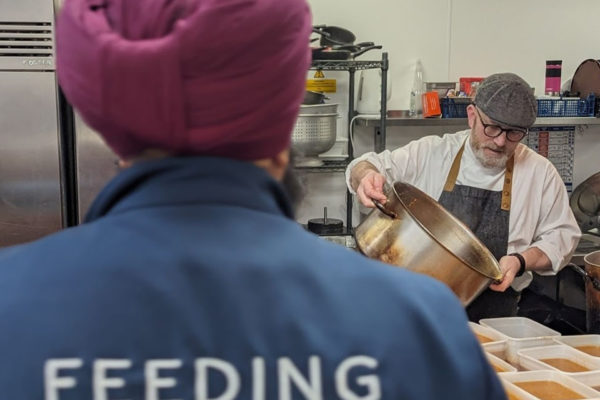Why Education Goes Beyond Exams
By
1 year ago

Measuring the value of education goes beyond exam results, says Magnus Bashaarat, head of Maida Vale School.

Magnus Bashaarat
The Labour Party’s announcement to levy Value Added Tax on independent school fees has grabbed many headlines lately. The debate still rages and will no doubt give many parents pause when considering a private education.
Independent schools work hard to ensure that parents’ investment and, in some cases, sacrifices are worthwhile. One of the tools we use to measure the difference our teaching makes is ironically also called VAT – Value-Added Test. First developed in America as a way to identify the contribution that teaching made to a pupils’ academic results irrespective of ability. This VAT is a programme which takes an individual pupil’s scores in standard tests and compares them with the middle performance of all pupils nationally. Any difference between expected and actual scores is attributed to the value added by teaching.
It is not revolutionary or a new discovery, but I am now in my third headship, and in my (so far) 30-year career it seems to me to be the most honest, authentic and meaningful way to express a pupil’s academic journey, and the actual impact the school, and its education provision, has had for that pupil.
Most HMC schools like to celebrate an A* to B percentage at A-level after results day in August. Year on year that percentage might average 80 percent at a ‘good’ school, or 90 precent at a ‘very good’ school. I do not think that this is the only, or indeed best way of expressing pupil achievement nor is it indicative of teaching or learning and the actual impact that the school has had on the pupil. I have taught at big, well established, and highly selective schools, and the easiest way to improve academic outcomes, if that means an A*- B top line at A-level, is to raise the selection threshold to maintain a stream of pupils predestined, like academic Calvinists, to get A*s at A-level. This does not tell parents or school leaders anything about the effectiveness of teaching and learning. I have come across some seriously inadequate teaching at what would purport to be ‘academic’ schools. But the extent to which a pupil’s full academic potential has been held back by shoddy teaching would be hard to identify from results alone.
At Maida Vale School we have Value Added Teaching baked into our education from the length of our lessons to the depth of our curriculum and commitment to pastoral care. Our lessons are 90 minutes long, facilitating time for information, reflection, and consolidation.
Our GCSEs are taught over three not two years to enable a deeper understanding, experience, and exploration of the subject. Finally, our pastoral support gives every child their own personal tutor for the duration of their time at
the school.
To evaluate progress each year our pupils take CEM (Cambridge’s Centre for Evaluation and Monitoring) baseline tests – MIDYIS in Year 7, YELLIS in Year 10 and ALIS in Year 12. The results of which predict what grades pupils are likely to achieve in all subjects at GCSE and A-level. The scores in these CEM tests are then measured against the students’ actual GCSE or A-level results to calculate how much extra progress the school has contributed to each student, the value added. For example, in 2023, we knew we had added significant positive value to Year 11’s baseline data in GCSE. On average, English and Geography added one extra grade of value; Spanish 1.2, History 1.8; Music 2.1; French 2.2; Art 2.2. It is even possible for a very able pupil with high test scores to achieve a positive VAT score; the score may be less than 0.5, but it could still
be positive.
VAT scores are a much more informative and meaningful way of measuring academic progress rather than a reductive single number for the whole cohort. Perhaps their introduction could feature in the next Labour manifesto?






